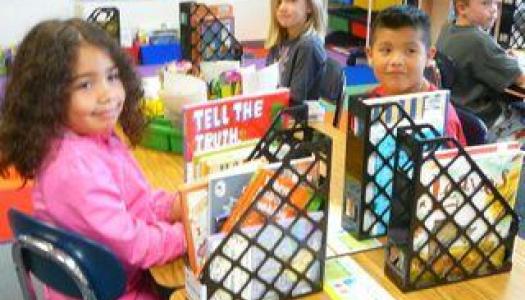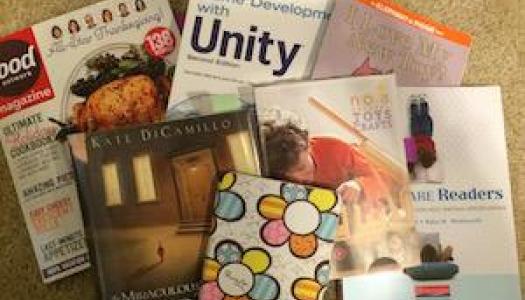Create Your Own Book Box and Advance Schoolwide Reading
Join Our Community
Access this resource now. Get up to three resources every month for free.
Choose from thousands of articles, lessons, guides, videos, and printables.
 This year, you will often pose the question, “What’s in your book box?” to your classroom readers. In response, students will show you a variety of good-fit texts: picture books, nonfiction, poetry, magazines, and more. They will share their tastes as readers and talk about how they choose books. Wouldn’t you like to do the same?
This year, you will often pose the question, “What’s in your book box?” to your classroom readers. In response, students will show you a variety of good-fit texts: picture books, nonfiction, poetry, magazines, and more. They will share their tastes as readers and talk about how they choose books. Wouldn’t you like to do the same?
Well, you can. A teacher book box is easy to prepare and fun to share. You can include what you are currently reading (a novel, a newspaper, a travel book, a biography, a magazine, or any other appropriate text). It’s a fantastic way for your students to get to know you as a reader and as a person. Plus, it will serve as a helpful reminder to set aside some time for your own reading life. Sharing your teacher book box gives you a chance to talk about I PICK (Boushey & Moser, 2014). It allows you to model the steps of I PICK in an authentic way.
By discussing how you choose your books, you can model how an expert reader determines if a book is a good fit. To show how you get more information about a book, you can demonstrate by examining its front and back covers and reading the blurb and inside flaps. Next, you can share your purpose for reading a text and explain why it interests you. Last of all, you can model how you investigate the difficulty of a text by reading a brief part to ensure that you comprehend it and know the words. Each week, you can even schedule a few minutes to share your enthusiasm about a recent addition to your book box and review I PICK.
Your example of a teacher book box may spark the interest of colleagues. Staff might ask you to share the concepts of good-fit books and I PICK so that they can answer students’ questions. The entire school community may want to participate by preparing their own boxes. You can offer to help coworkers set up their own book boxes if they are not familiar with the concept.
Just as students decorate their book boxes, staff members may want to adorn theirs with pictures of family, pets, beloved titles, and favorite authors. Perhaps your principal or literacy coach can obtain the same types of book boxes for interested staff members (from the social worker to the physical education teacher to the school nurse). This way, children will find it easy to spot those distinctive book boxes all over the school.
As students travel from place to place around the school, they will see those decorated boxes and observe wonderful examples of people who value reading. Before long, children will notice what others are reading, and see each of them as a unique and interesting reader, too. Better yet, children will want to be part of that strong school reading community! They will soon grasp that each reader has different interests and purposes for reading. Just as important, they will recognize that all readers need to have books that they can understand and enjoy. Students will sense the urgency of reading voraciously and having a box filled with books they cannot wait to read.
So, start a book box movement at your school. Begin by preparing your own teacher book box. Encourage the members of your school community to do the same. You can expect some rich conversations about reading to take place every day among adults and children. With curiosity, students will ask you, “What’s in your book box?” That is one of the best schoolwide discussions for students and their teachers to have.
Reference:
Boushey, G., & Moser, J. (2014). The daily 5 (2nd ed.). Portland, ME: Stenhouse.








